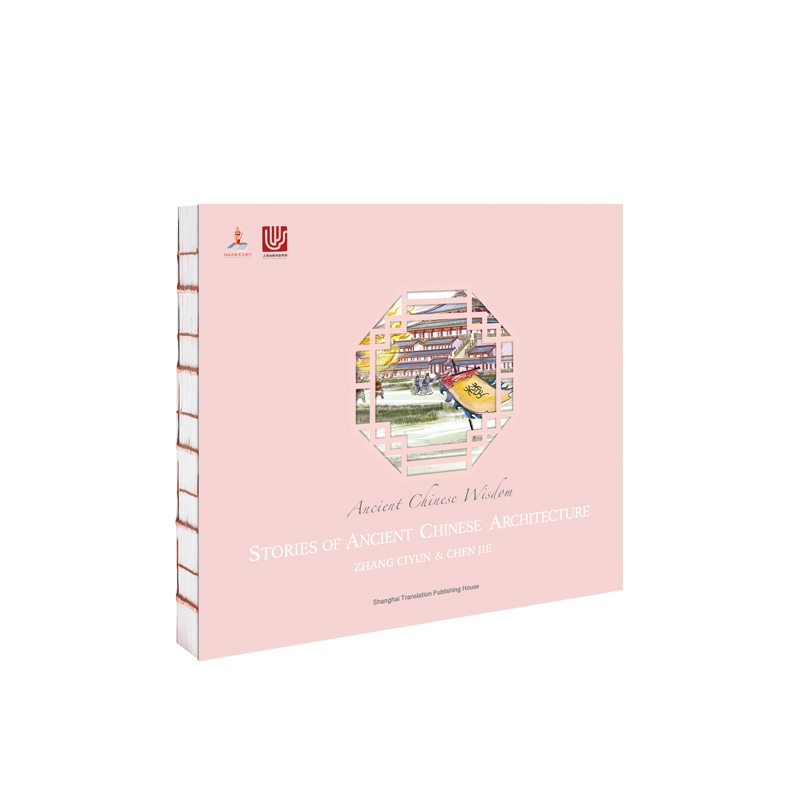
出版社: 上海译文
原售价: 78.00
折扣价: 51.48
折扣购买: Stories of Ancient Chinese Architecture 中国古建筑及其故事(英文版)(Ancient Ch
ISBN: 9787532783403

"【作者简介】:张慈贇,国内资深英文媒体人,高级编辑,享 受 国 务 院 政 府特殊津贴。曾就读于美国斯坦福大学,获硕士学位。长期从事英文新闻工作,参与《中国日报》的创办,主持创办《上海日报》《北京周末报》《上海英文星报》,均任第一任总编辑。现为中国翻译协会常务理事。曾在国内外报刊上发表大量新闻报道、特写、评论和专栏文章。 Born in Shanghai in 1949, ZHANG Ciyun (Peter) is the founding Editor-in-Chief of Shanghai Daily, a leading regional English-language daily newspaper on the Chinese mainland. He is also a prolific translator and writer. Mr. Zhang graduated from Jilin Normal University in China, majoring in English language, and later from Stanford University in the United States with a master’s degree in journalism. Starting from 1980, he had worked in several news agencies in China and helped bring into existence four English-language newspapers, including China Daily and Shanghai Daily. "
\"【精彩书摘】: The Palace Museum Forbidden City — the dragon’s jewel Located in the middle of Beijing, the Forbidden City is without dispute the largest and most grandiose imperial palace in the world today. From the early years of the Ming Dynasty (1368–1644) to the end of the Qing Dynasty (1644–1911), the palace served as the home of 24 Chinese emperors as well as the political center of China’s government for nearly 500 years. When Zhu Di, the third emperor of the Ming Dynasty, came to the throne in 1402, he decided to move the capital from Nanjing, now the capital of Jiangsu Province in east China, to Beijing in order to better defend the northern territory of the country against tribal invasions. The construction of the Forbidden City started in 1406 and was completed in 1420. It turned out to be a gargantuan complex with more than 870 buildings and a combined floor space of about 8,700 jian (an ancient Chinese spatial unit) or nearly 150,000 square meters. The rectangle-shaped imperial compound covered 720,000 square meters. It is surrounded by a high crimson wall and a 52-meter-wide moat. The buildings in the imperial compound, also with crimson walls as well as tall roofs covered with golden glazed tiles, were almost all built of wood and bricks, with many sitting on extensive and exquisitely carved marble platforms. The wood used in the construction was mostly precious nanmu found in southwest China and the floors of many halls were paved with specially baked “golden” bricks. The beams, columns and rafters in these buildings were exquisitely painted, carved or decorated, particularly with various variations of dragon, the symbol of Chinese emperors. The north-south axis of the compound extends all the way to the south to the Tian’anmen Gate Rostrum and Tian’anmen Square, the center of Beijing today. The compound itself is divided into two parts, with the southern half (called the outer court or the front court) used by emperors for ceremonial purposes and the northern half (called the inner court or the back palace) serving as the residence of the imperial families as well as the site for handling daily affairs of state. Of all the buildings in the Forbidden City, the 35-meter-high Taihedian or the Hall of Supreme Harmony is the largest and most majestic. Sitting on a three-tier marble terrace, the hall covers a space of 30,000 square meters. It was the place where the emperor received officials and exercised his supreme power over the nation. As a result, the Hall of Supreme Harmony had always been deemed as the symbol of supreme imperial power in China during the Ming and Qing dynasties. In addition to dozens of grandiose halls and pavilions, the compound also boasts a private garden that was specially designed for the imperial family. Covering an area of 12,000 square meters, the garden, called Yuhuayuan or Imperial Garden, was filled with ancient trees, exotic rockeries, flowerbeds and bronze incense burners. After the fall of the Qing Dynasty during the 1911 Revolution, the Forbidden City was turned into a museum. In 1987, it was named a World Heritage Site by UNESCO. Today, the Forbidden City is called the Palace Museum, housing more than 1 million items of art, including paintings, pottery, carvings, bronze wares and rare documents. The Forbidden City represents the pinnacle of ancient Chinese architecture and for several centuries following its completion, it exercised great influence over the evolution of architecture not only in China, but also in many other countries in East Asia. Pictorial dictionary 间 bay When used in terms of buildings or structures, the Chinese character 间 usually means a room today. But in ancient China, it was used as a basic spatial unit of a building defined by four columns. However, the distance between two columns or the bay width could vary according to the social status of the owner of a specific building. For instance, for ordinary people, the bay width of their houses usually could not exceed one 丈 or about 3.3 meters. And it became wider in houses built for people of higher social status or government ranking. For imperial palaces, such as the Forbidden City in Beijing, the bay width could reach more than 1.7 zhang or 5.8 meters. So, when you hear people say that the Forbidden City contains 9,999 and a half jian, it doesn’t mean that there are that many “rooms” in the palace, but rather the term here is used to describe the extremely extensive floor space of the buildings in the imperial compound. \" \"【编辑推荐】:“中华优秀传统文化传承系列”由上海译文出版社精心策划,获国家出版基金、上海出版资金资助出版,系列共含以下6册: Chinese Idioms and Their Stories《中国成语故事(英文版)》 Ancient Chinese Who Left Their Marks on History《中国历史人物(英文版)》 Gems of Chinese Classics《中国历史著述(英文版)》 Chinese Mythology & Thirty-Six Stratagems《中国成语故事与三十六计(英文版)》 Brush Away the Mystery of Traditional Chinese Painting《中国历代著名绘画作品鉴赏(英文版)》 The Stories of Ancient Chinese Architecture《中国古建筑及其故事(英文版)》 《中国古建筑及其故事(英文版)》以地道流畅的英语,深入浅出地介绍了45处中国古建筑,配以彩色插画,赏心悦目,图文并茂,是读者学习中国传统文化、讲好中国故事的生动材料。 本书彩色印刷,装帧精美,封面采用进口环保艺术纸,运用了模切镂空工艺,正文采用105克东方雅韵艺术纸,裸脊彩线装订。 \"